If you can answer “yes” to these three questions, this blog post will take your social studies class to the next level:
- Do you want your students to genuinely enjoy social studies class?
- Do you want to put away your history textbook for a while and “spice up” your lessons?
- Do you want your students’ depth of historical knowledge to be deeper and more meaningful?
If your answers were “yes,” then keep reading! This blog post contains valuable information for you!
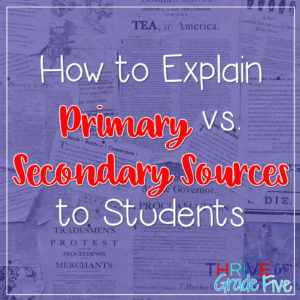
Explaining primary vs. secondary sources to students
Defining Primary: Something created by a person who lived through or experienced a time period or event
Example: Photograph of Abraham Lincoln delivering the Gettysburg Address
Defining Secondary: Something created by a person who studied a primary source but didn’t actually witness, experience, or live through an event or time period
Example: A Children’s book about George Washington written in 2007
Many times we can’t speak to people who lived through a time period or event, but we can look at the interesting things they left behind, including objects, paintings, photographs, journals, and more!
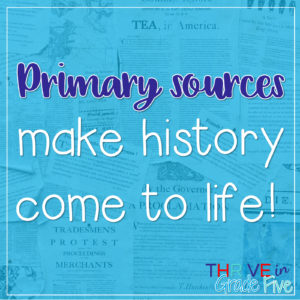
Primary sources make history come to life
Primary sources give us an insight into life in the past that we couldn’t possibly get from history books. There is a new dimension of learning added when students are able to see images and photographs, hear music, and read the original words of people who lived during a time period or event.
When I began teaching social studies, I became passionate about helping students dive deep and truly care about history. Funny story: In the days before SmartBoards and digital projectors, to show my students primary sources, I would print a photograph, image, or text and then transfer it to an overhead projector transparency!
We have it so much easier today! I can just head to the Mount Vernon website and pull up their amazing online showcase on my SmartBoard to give students a full view of George Washington’s icky dentures or any other object I think would interest them.
This is just one example of the fascinating primary source artifacts available for students to examine on the Mount Vernon website:
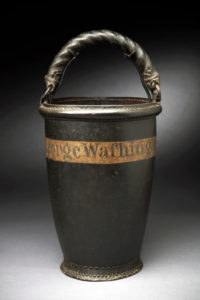
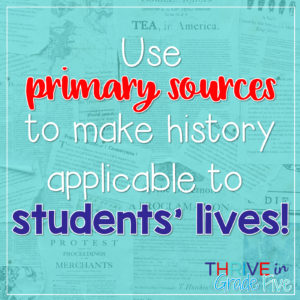
Primary sources make time periods more applicable to students’ lives
Seeing actual people involved in horrific events or powerful historical periods makes the event so much more personal to us. It’s easy to feel a connection to the people of long ago that are pictured in photographs and images. I notice this is true with my students as well. They feel much more of a link to the past when they see photographs.
I love using this Civil War gallery activity with my students. The primary source photographs I chose for this activity are powerful and unique.
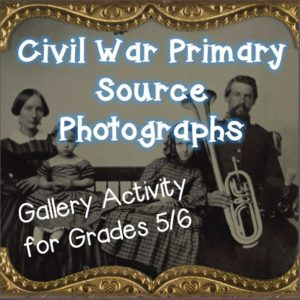
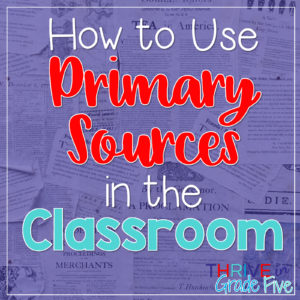
How to use primary sources in the classroom
When you encounter a primary source text, it may seem like an overwhelming task to teach it to students. The spellings often differ from our modern spellings. Things are phrased differently.
Tip: Teach students to rely on context clues when reading historical documents or quotes. There may be a word or two that they don’t understand but if they read the context, students will usually be able to ascertain the meaning.
Tip: Don’t use the entire document. Take a few lines from it that are especially meaningful for the time period/event you are teaching.
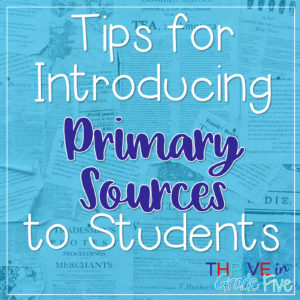
Introducing primary sources
I introduce primary sources in one of two ways. My favorite way is to give students the primary source and tell them absolutely nothing about it. I ask them to talk with their tablemates and decide what is happening in the primary source and how it relates to the time period we are studying.
I especially love doing this with Ben Franklin’s 1754 political cartoon, Join, or Die. I love walking around and listening to the ideas my students share when they are trying to figure out what this print is all about.
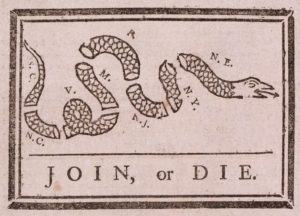
The other way is to introduce the primary source and allow students to examine it and discuss what they notice.
When showing and discussing primary sources with students, talk about which ones probably show how life really was in the time period and talk about which ones are probably satire or advertisements.
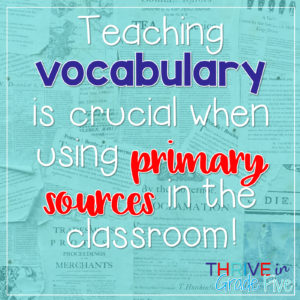
Vocabulary is crucial
Define particularly difficult and/or vital words ahead of time for students. We all know that vocabulary is critical in understanding what we read. If students know ahead of time what some of the words mean, their comprehension will greatly increase.
This is a great example of defining words ahead of time for students:
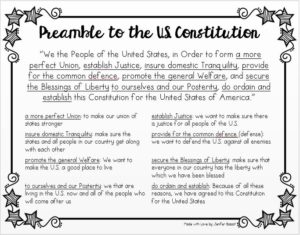
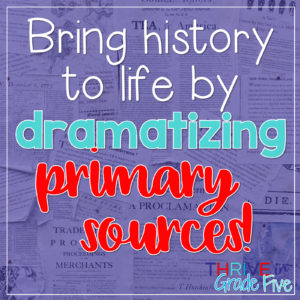
Get students actively engaged in learning about the primary source
Some primary sources lend themselves well to acting out by students. However, I must caution you… Don’t do any reenactments involving slavery, as this topic is too painful and sensitive. Students will remember so much more about the primary source if they are actively involved in dramatizing it!
When I show the following primary source to students, I ask them to check out the facial expressions of the men involved. I circle one of the faces and ask students to write a paragraph worth of dialogue that the man may have said.
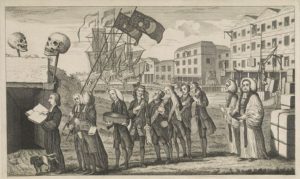
This is also an excellent primary source image to act out. You don’t need costumes or props, just group your students and ask them to recreate the image as closely as possible. Fun!!!
If you’re interested in a ready-to-use resource that covers the Road to Revolution and includes fantastic primary sources, check this out: Road to Revolution Unit
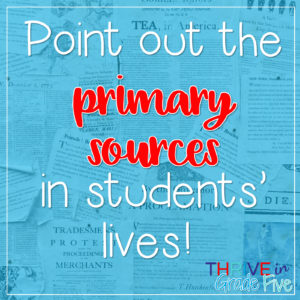
Primary sources in students’ lives
Talking to family members can be a primary source. Some of the most thought-provoking stories my sweet grandma ever told were of her life in rural Oklahoma during the Dust Bowl and Great Depression. Encourage kids to talk to their family members about the past. Our older family members are treasure troves of information!
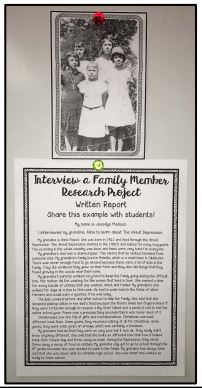
This is one of my very favorite research projects to use in my classroom. This project reinforces primary sources AND gets students talking about the past with their families. I love the stories my students bring for me to read (and grade)! Interview a Family Member
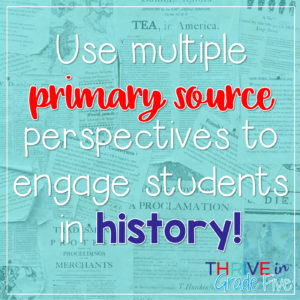
Use multiple perspectives and angles to learn about historical events/time periods
Primary sources can help us show events and time periods from multiple perspectives and angles. My very favorite historical figure is George Washington. Because he was such a major figure, there is no shortage of primary source material concerning him.
In my classroom, I like to do “George Washington centers”. We usually do these centers after our Revolutionary War unit because by that time, students will be very familiar with our first Commander in Chief. The purpose of this center activity is to help students look at George Washington from multiple perspectives.
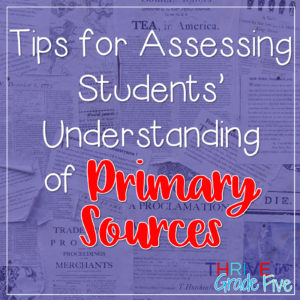
Grading or assessing understanding
Be careful when grading because students’ interpretations of primary sources will vary greatly, just like adults’ interpretations of artwork. If I implement a graded assignment involving a primary source, I usually ask students to write three inferences they can make from the source and support those inferences with references from the source.
If your state social studies assessment asks students to analyze primary source images and quotes, you may be interested in this resource. I created this resource to give standardized test practice involving primary sources. Click here to view Primary Sources – Instruction and Test Practice.
Excellent resources for finding primary source images:
Library of Congress – This is seriously an awesome resource because the LOC has gone to the trouble of creating specific online collections for certain eras, like the Revolutionary War, Jamestown, Colonial Era, Civil War, and more!
Click here to see the Library of Congress collections
Click here to see the Archives of the U.S. Government
Click here to see the online collections of Colonial Williamsburg
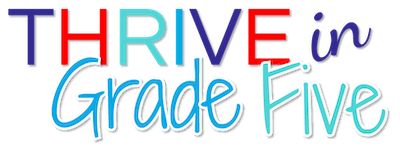
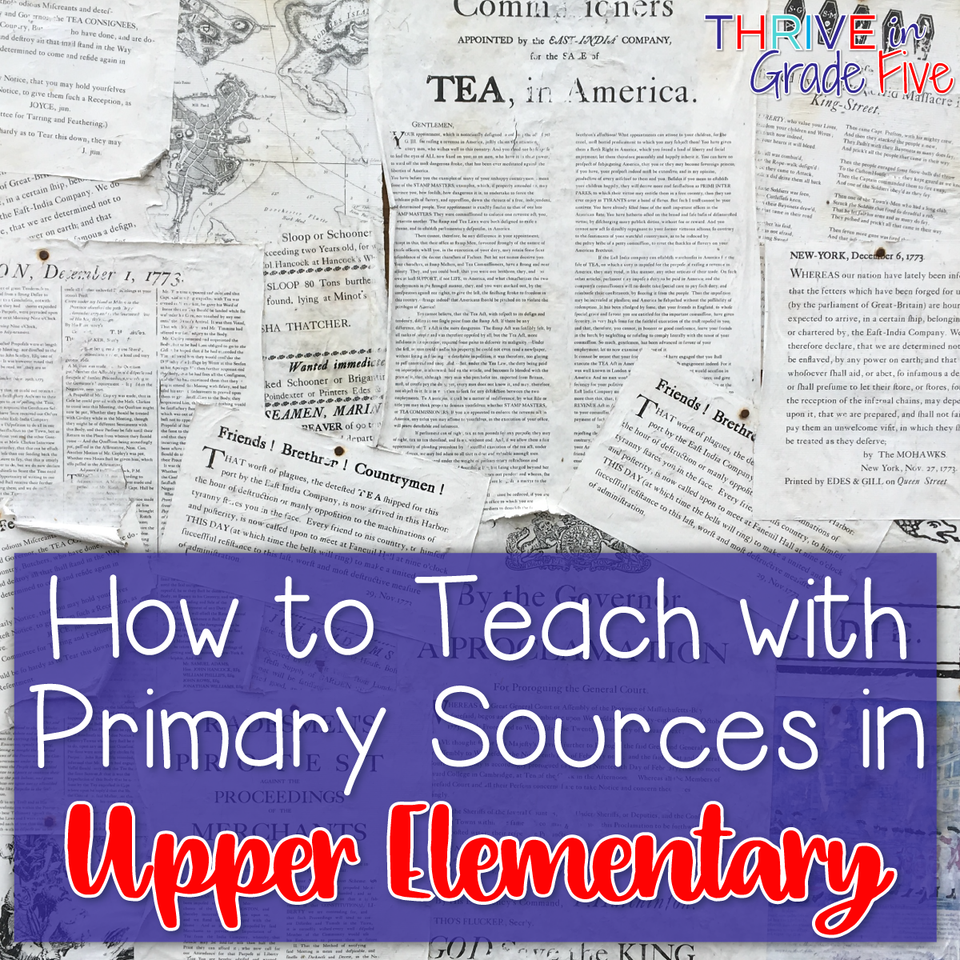
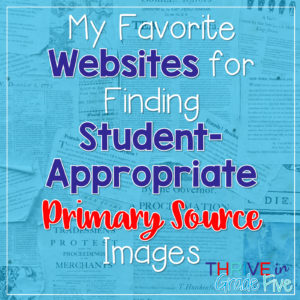
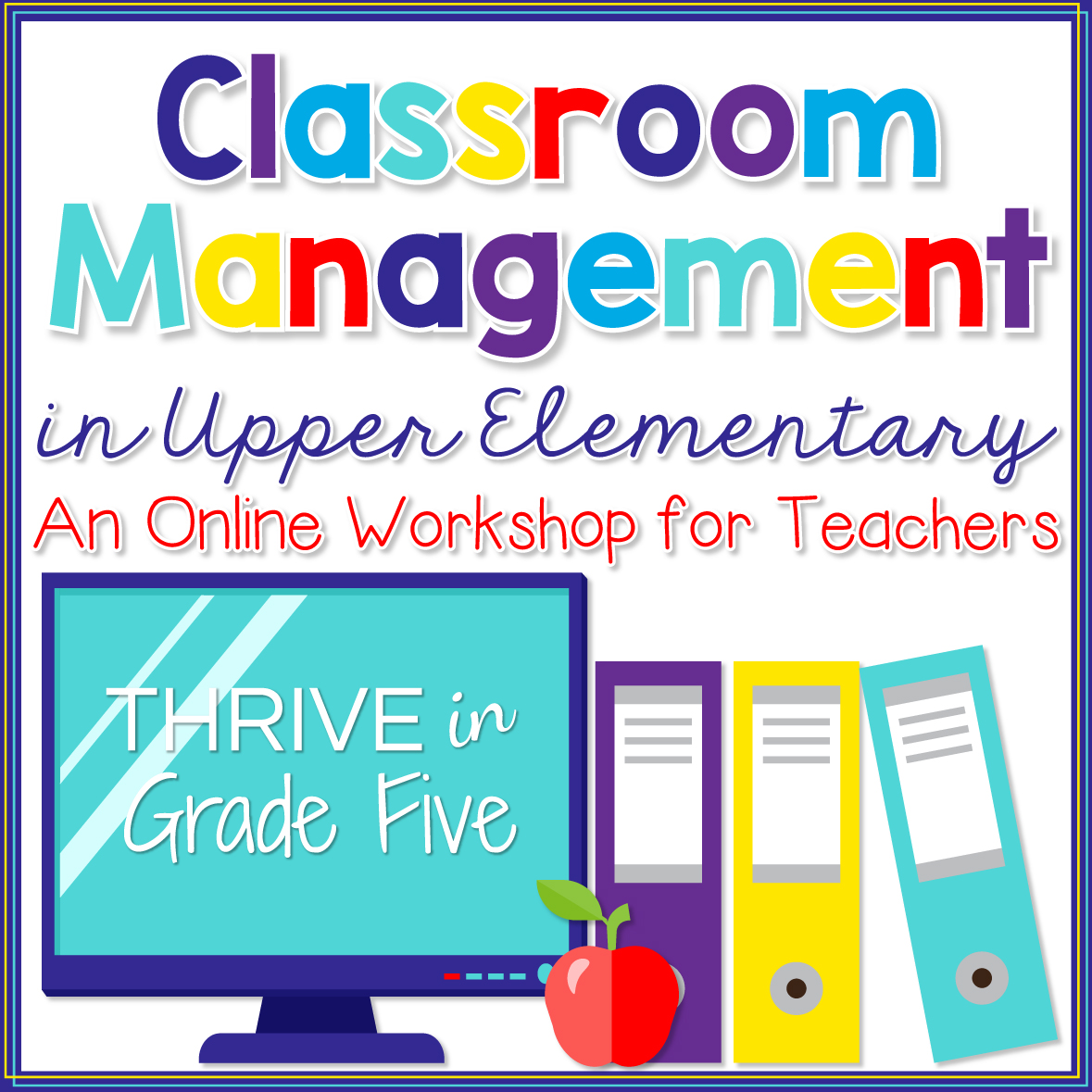
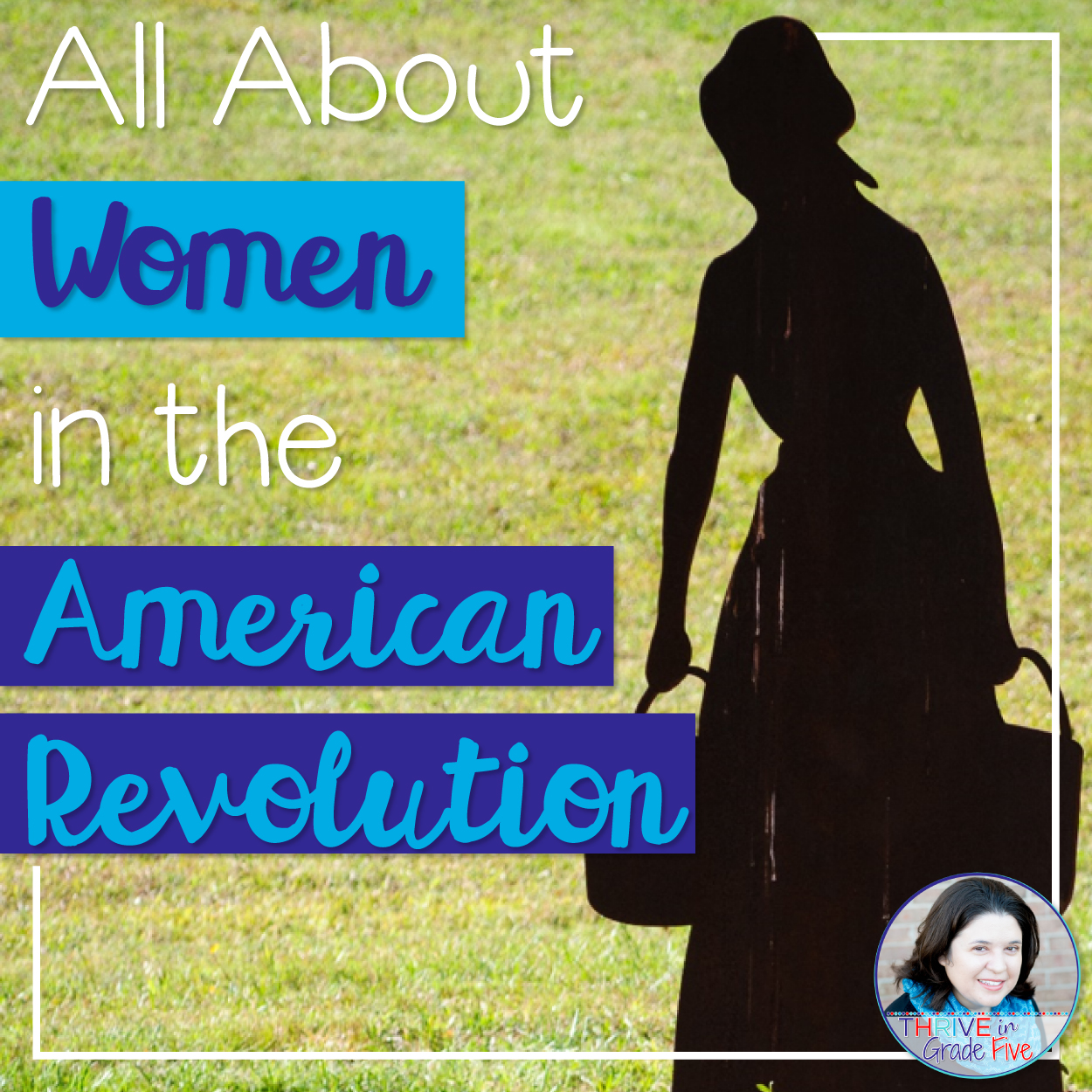
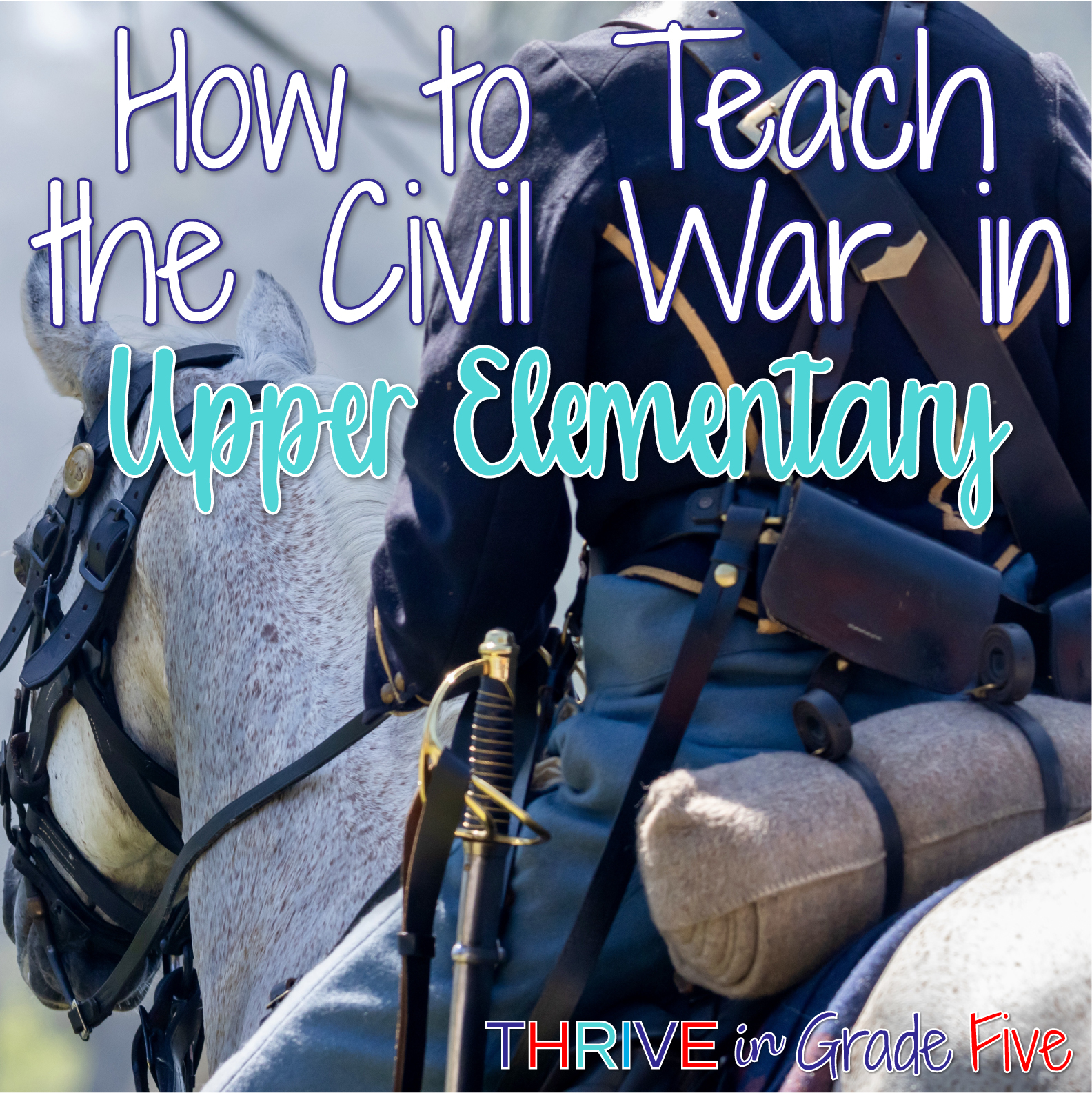
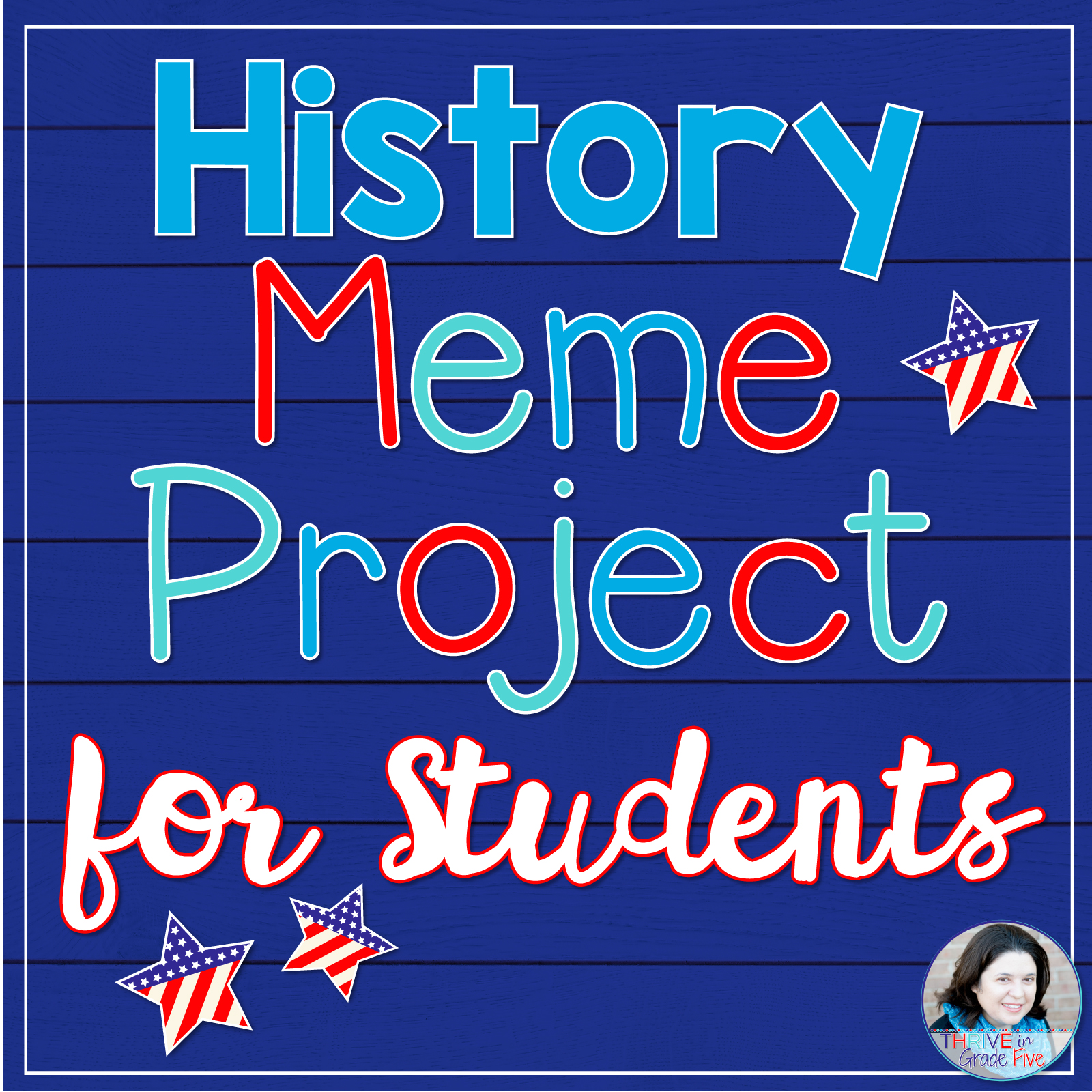
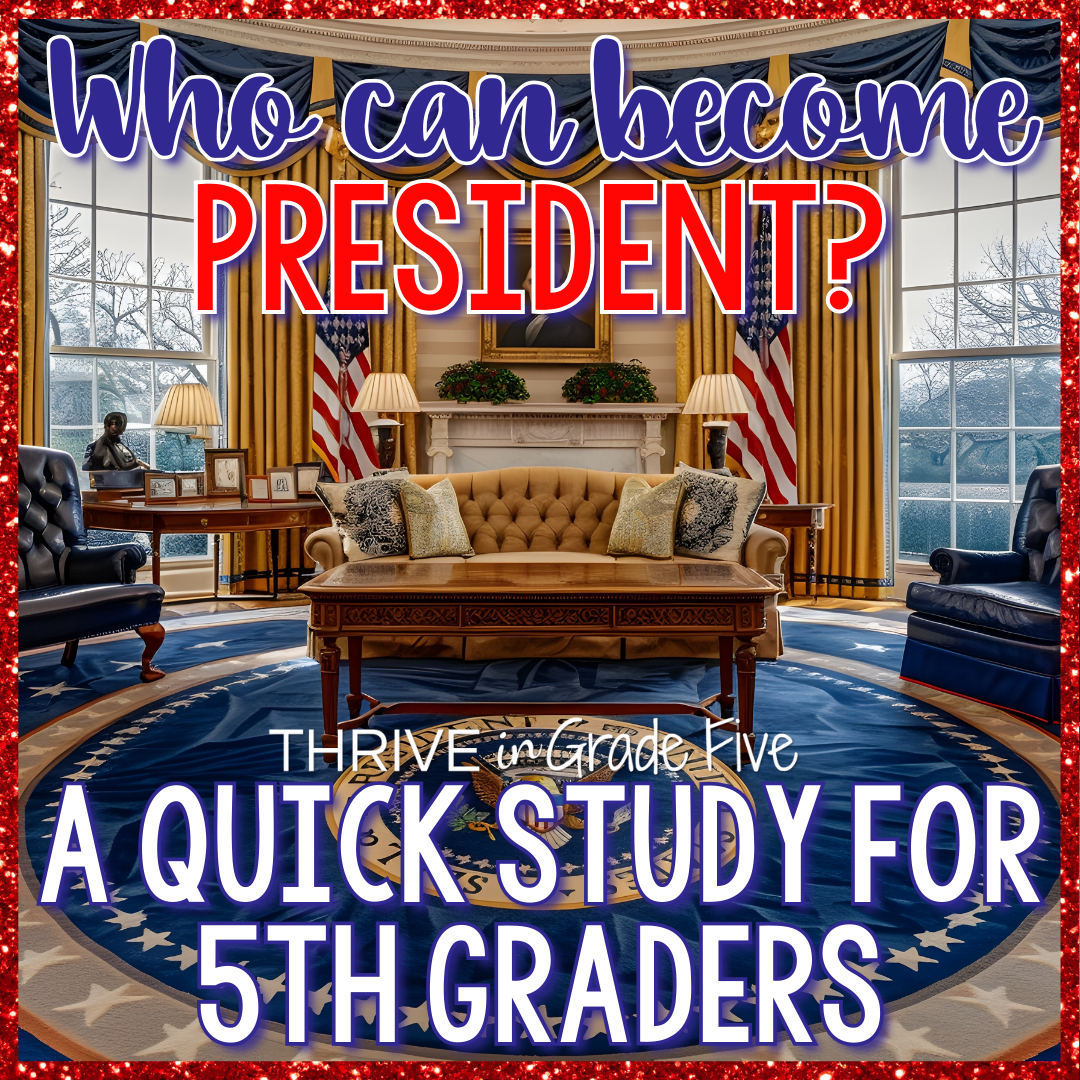

5 Comments
Check out the Primary Source Nexus teaching resource blog for help with teaching with primary sources from the Library of Congress.
Curated primary source sets
Teaching resources
Teaching strategies
Grade 5 CCSS primary source writing prompts & activities
I was super impressed by all your ideas. I have 23 years of teaching experience behind me in social studies and was still able to garner some great ideas! Thanks!
Thank you so much, Jill! I love hearing that!
This id awesome. I found so many great ideas. Thank You for doing this site.
You are very welcome, Lynn! Thanks for taking the time to leave a comment 🙂